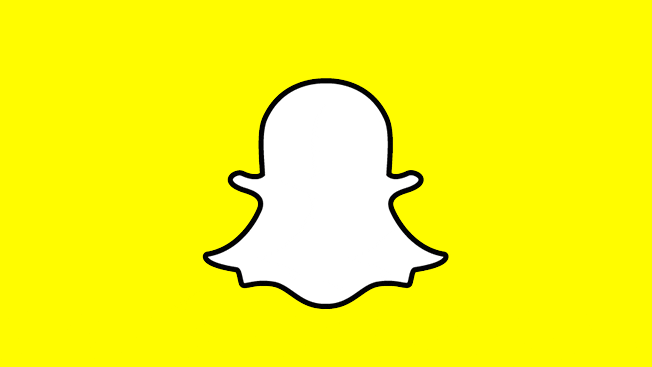Snapchat Is Blazing Its Own Media Trail by Constantly Charting New Territory
But will the approach win in the long term?

Snapchat has always seemed to march forward on its own terms, at times almost in the mode of "damn the torpedoes, full speed ahead." So it shouldn't be a surprise that under its new moniker, Snap Inc., it is still giving the industry's rules a reboot, underscoring a style of disruption that remains the mobile media company's modus operandi.
Four years ago, when the Snapchat app launched, older people shook their heads at the idea of disappearing messages. A few years later, digital marketers scoffed at the idea of moving from landscape mobile video to the app's vertically designed clips—with the sound automatically on, no less, which was the opposite of the era's best practices. And many players raised their eyebrows when observing the app's often goofy sponsored lenses and geofilter ads.
In another intriguing development, a Digiday story late Wednesday stated that Snap Inc. was pitching marketers a product called Snap to Unlock, which lets brands give users the ability to quickly get a geofilter. Per the publication, Snap to Unlock will only be available to advertisers who spend $750,000 per quarter. What's more, Recode reported in October that Snap Inc. wants to ditch its revenue-sharing model with Discover publisher partners like ESPN and Daily Mail in favor of a flat fee and keeping all ad sales.
While Snap Inc. hasn't confirmed or commented on the possible turn of events, as Recode noted, the flat-fee scenario is a similar distribution model that TV networks employ when they buy content. That idea only further suggests that Snapchat wants to be recognized as something much bigger than a social app. And the flat-fee publishing model further differentiates Snapchat from Facebook, which uses revenue sharing for ad sales with publishers in its Instant Articles program.
"Publishers will need to fall in line because Snapchat has all of the leverage," said Sean Cullen, evp of product and technology at ad-tech company Fluent. Brian Marvin, co-founder of ecommerce platform Bringhub, agreed, saying, "With Snapchat's incredible growth and adoption by millennial and Generation Z users, publishers who want to be relevant will acquiesce to this new revenue model."
How the publishing model ultimately shakes out with digital media players will largely depend on the economics of that flat fee, contended Scott Symonds, AKQA's managing director of media. "Obviously lots of publishers are testing Facebook now and some are finding financial success and some aren't," he said. "Competition for distribution between Facebook and Snap should help publishers over the long-term, though."
"It's entirely a matter of market and deals," added Jason Kint, CEO of Digital Content Next. "If a content company doesn't have control over the advertising around its brand, then it may be a nonstarter."
See the kids, be the kids
Either way, it's all about appealing to the selfie generation, bucking trends and dismissing many marketing mores. Snapchat's ad products seem different because, according to Snap Inc., many of them are developed by the consumer-facing product team.
"Snapchat's product strategy is reflective of its youthful leadership," said Rachel Pasqua, practice lead for MEC Global's Connected Life division. "The people making the product are the same demographic as the people using the product. They don't have to rely on research and data to inform product decisions—they're just making things that they themselves want to use based on the zeitgeist of their generation."
Kim Jimenez, Omelet's senior social strategist, commented that Snapchat has "ushered in a contrarian way of life, pushing back on the norms of typical social media behavior. With a generation of people accustomed to perfectly manicured digital profiles, this was a breath of fresh air. Without asking for it, they got a revolution and suddenly had a safe space to truly be themselves."
Marvin recommended, "If [its] leaders want to continue disrupting social media, they will continue to merge content, advertising, and commerce on a single platform."
But will it become more "normal?"
Since the launch of its API, Snap Inc. has reiterated that its ad products build on what came before from the likes of Google, Facebook, Yahoo and AOL. And there's certainly truth to that. For instance, it has moved on from CEO Evan Spiegel's once-declared aversion for ad targeting to now embracing data-based marketing for its brand clients. That development alone makes it look a bit more like its digital forerunners, namely Facebook, when it comes to reversing the narrative being put out to the marketing public.
"[Facebook execs] were not going to have ads for a long time," recalled Symonds. "They encouraged advertisers to build organic followers and then pulled the biggest switcheroo in digital history in diminishing organic distribution and charging for it. They were creative and clever about things like using [Facebook] as a global sign on."
Whether its Spectacles product plays into the Snapchat app's data mix could tell us much more about the company's future with marketers. The sunglasses will record a wearer's every sight, and the clips can be saved to Snapchat's Memories feature.
Marvin said he sees more retail-minded disruptive developments coming to Snapchat. "[It] has the opportunity to add further engagement and a richer user experience by adding commerce directly to its content," he predicted.
At the same time, Snap Inc.'s looming initial public offering has some wondering if it's innovative ways will continue at the rate of speed we've come to know.
"As it IPOs and continues to grow," Cullen said, "market forces will dictate that they become more mass market and predictable."
If those things happen, Snapchat may not seem the same. And such pivots might create an opening for another startup to "damn the torpedoes" as the battle for our mobile attention rages on.







